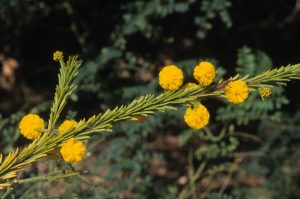Peter Geelan-Small has given us two excellent summaries of recently published articles, highlighting recent research and thought on the topic: What is the right balance between land use and conservation, to stop biodiversity loss?
Summary of ABC article (3 June 2022):More than 40 per cent of Earth’s land surface ‘must be conserved to maintain biodiversity’
About 44 % of the Earth’s land surface needs protection to stop biodiversity loss, according to recent research published in the journal, Science. Fortunately, a substantial part of that land identified (about 70 % of it or 31 % of the Earth’s land surface) is still ecologically intact. Some large intact areas are in wealthy countries like Australia and Canada, where conserving them is realistically possible.

A difficulty faced in conserving land is reconciling the right of people to use land for agriculture with the need to conserve land with high biodiversity value. The researchers estimated that by 2030 existing intact habitat amounting to as much as 2 % (1.3 million square kilometres) of the Earth’s land surface could be converted to human use. Most of this threatened land lies in developing countries, particularly in Africa, and its loss would be devastating, especially for wildlife.
Megan Evans, a UNSW environmental researcher commenting on, but not involved with, this study emphasised the equity issues that arise around efforts towards global biodiversity conservation. Dangers include disadvantaging local people through poorly planned projects or displacing locals by corporate offsets for impacts caused in other places. She recommends wealthy countries focus primarily on the impacts their own activities cause and implement good-practice conservation measures, such as cutting fossil fuel subsidies rather than using offsets elsewhere.
Steve Hemming from Flinders University points out that to conserve land with intact habitat does not always require indigenous people who may be living on it to be locked out. Forcing Indigenous people off land in eastern Australia has ended their practice of burning as a land management strategy and has resulted in uncontrollable bushfires as a result, he says.
April Reside, a co-author of the study, and Steve Hemming both underlined the value of indigenous land management globally and its importance in conserving biodiversity, while identifying politicians’ lack of understanding of this, particularly in Australia, as a key problem in land conservation efforts.
Summary of The Conversation article (6 June 2022) titled:Australia has overshot three planetary boundaries based on how we use land
Realising that the Earth’s resources are not infinite, as scientists have been warning for decades, leads to asking what the environmental limits are that humanity needs to live within. The Climateworks Centre in Melbourne has reported on five of nine global environmental

boundaries first outlined in 2009 and asked what this actually means for land use industries in Australia, such as agriculture and forestry.
One of these boundaries is biogeochemical flows, specifically nitrogen and phosphorus flows through plants, animals, soil, water and the atmosphere. Nitrogen and phosphorus are added to the environment in fertilisers used for food production, while nitrogen is also added to soil by nitrogen-fixing plants. These chemicals can run off into waterways, causing algal blooms and oxygen deficiency in water, which in turn harm aquatic organisms. In about half Australian river catchments, nitrogen and phosphorus levels exceed the safe level for environmental health.
Improving water quality benefits biodiversity by allowing all plants and animals relying on a particular water source to survive and maintain their health. Environments where species have been lost or where genetic diversity has decreased are less resilient and more susceptible to shocks.
Maintenance of biodiversity is another boundary Australia has failed to stay within. While Australia has high biodiversity, it also has some of the highest species extinction rates of any country, as the full report describes.
Knowing the limits of measurable environmental boundaries helps clarify how Australia sits relative to these boundaries. It also contributes, in a practical way, to how land use industries can help achieve sustainable development through reducing emissions and sequestering carbon despite pressure from increasing population and climate change.

